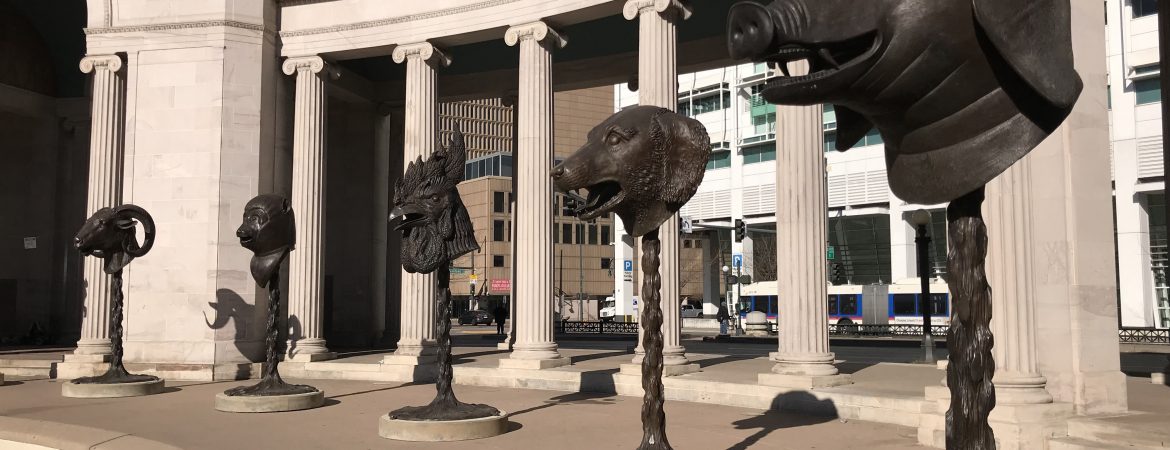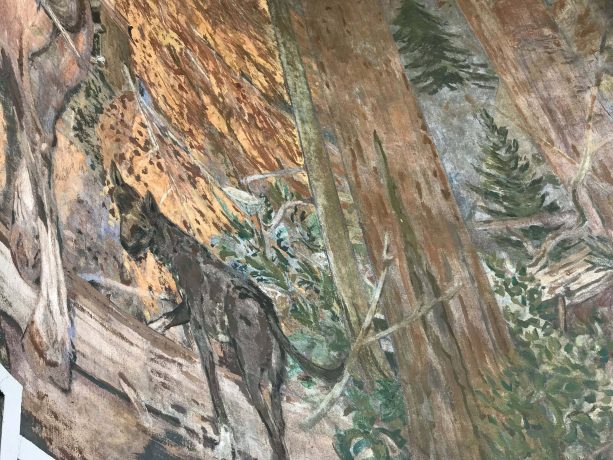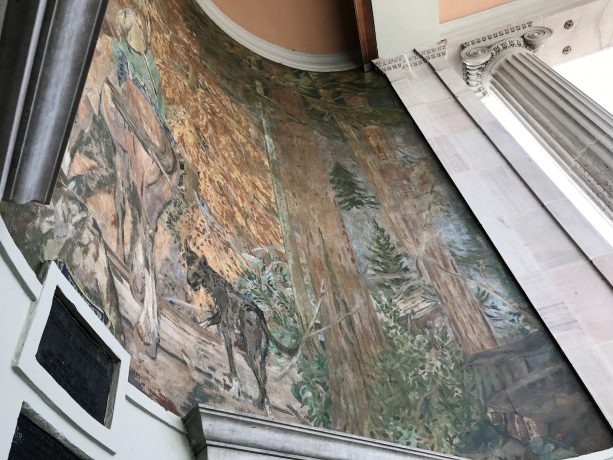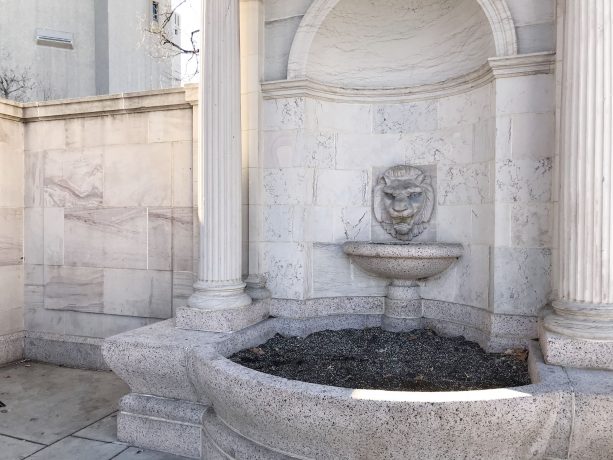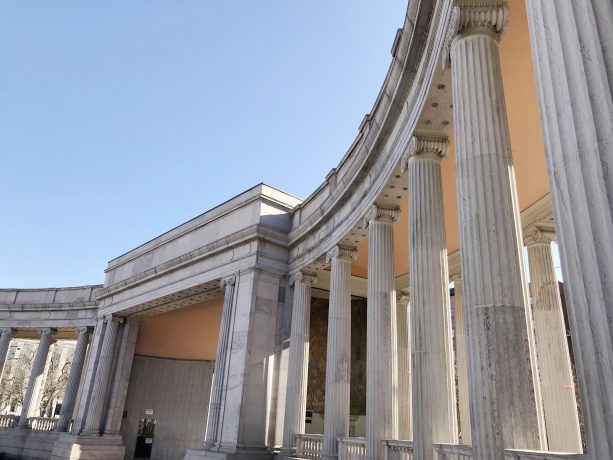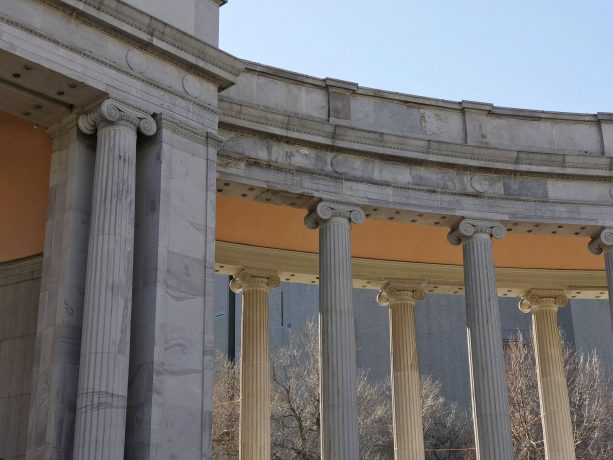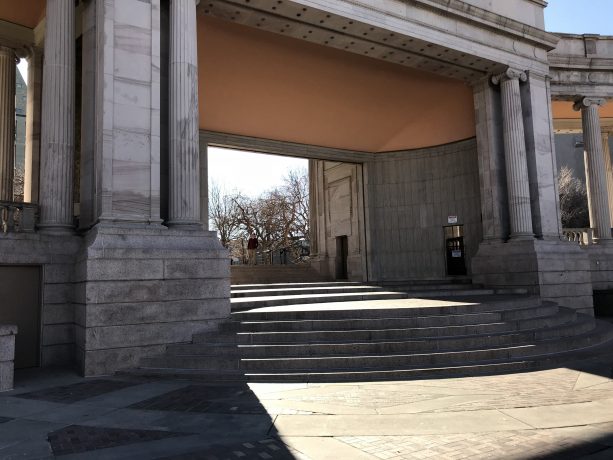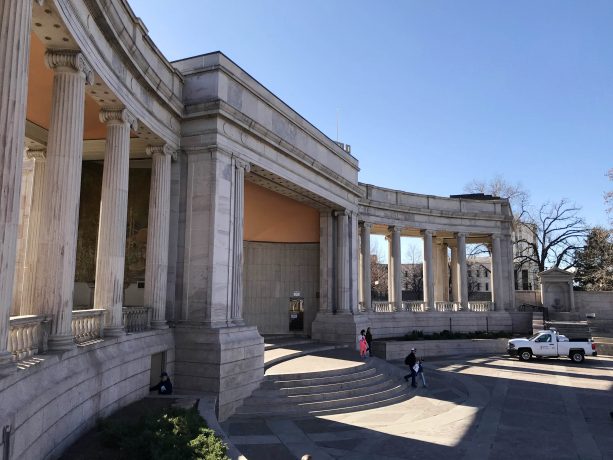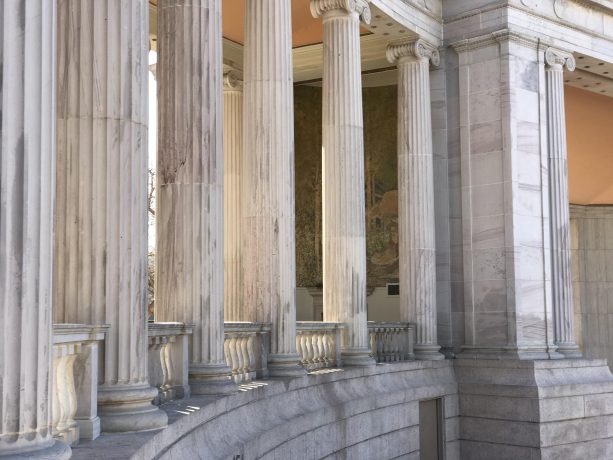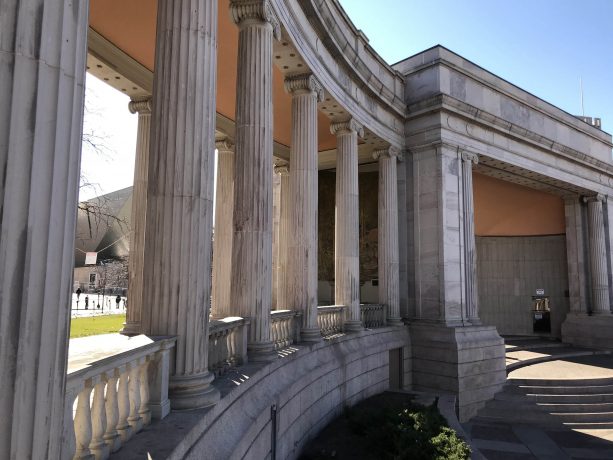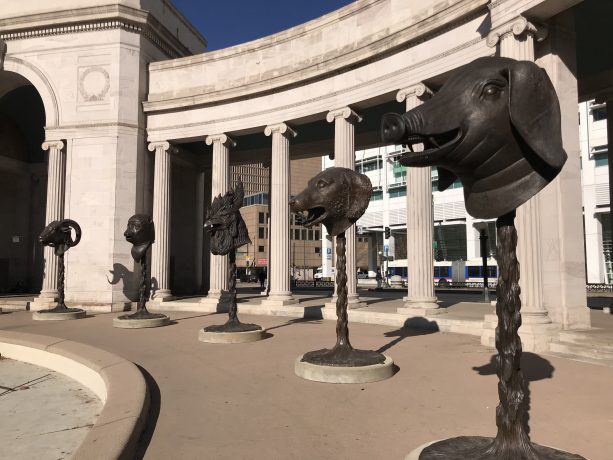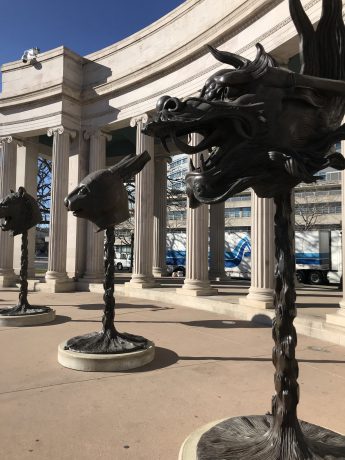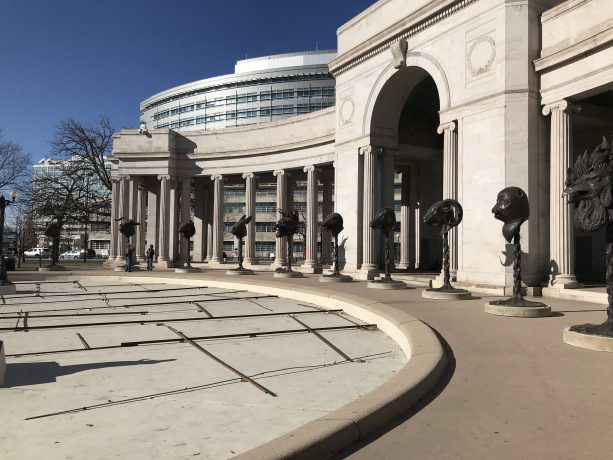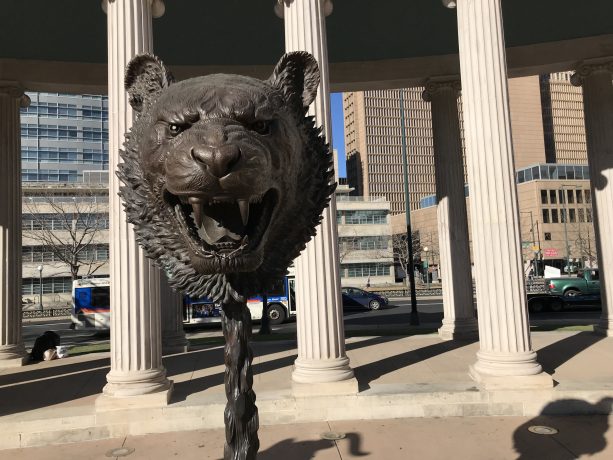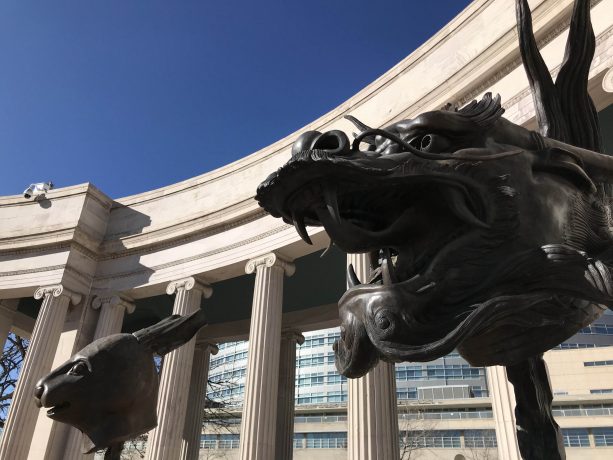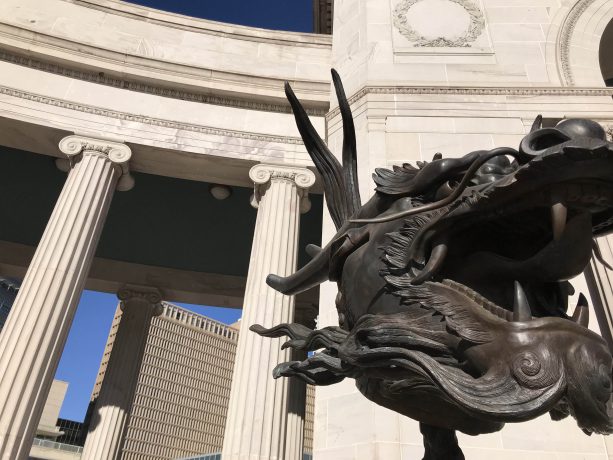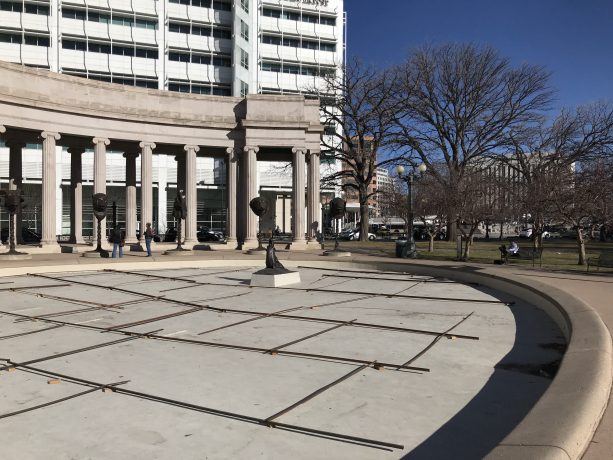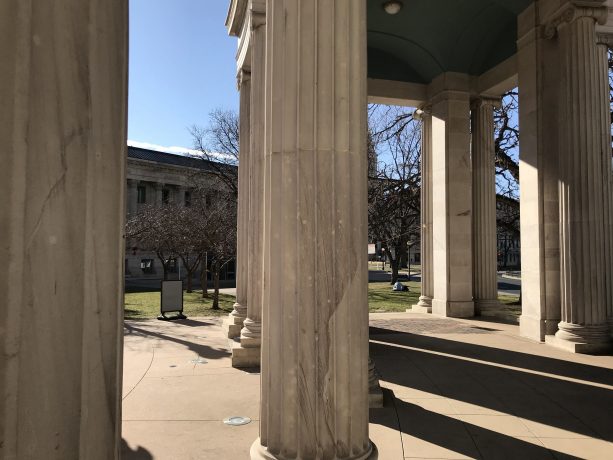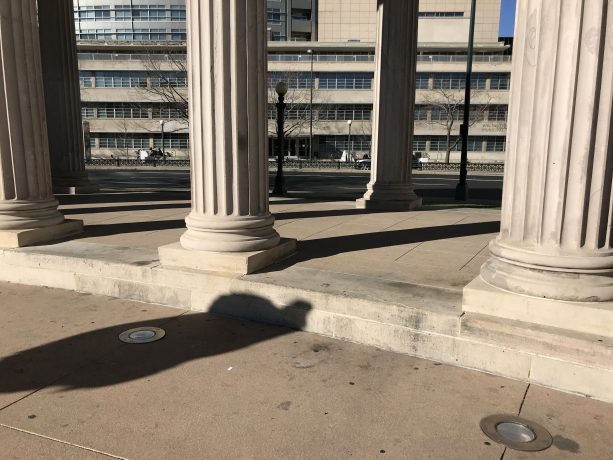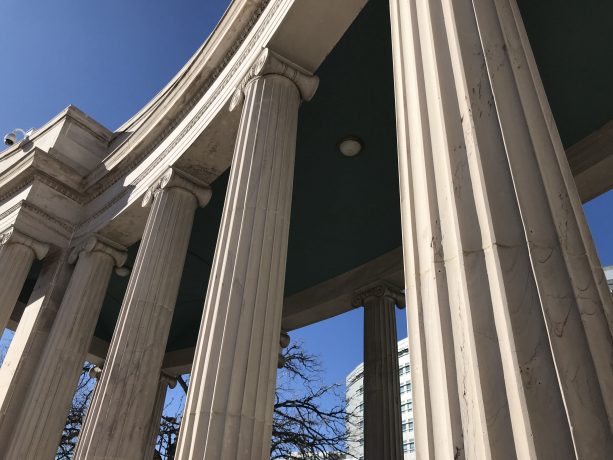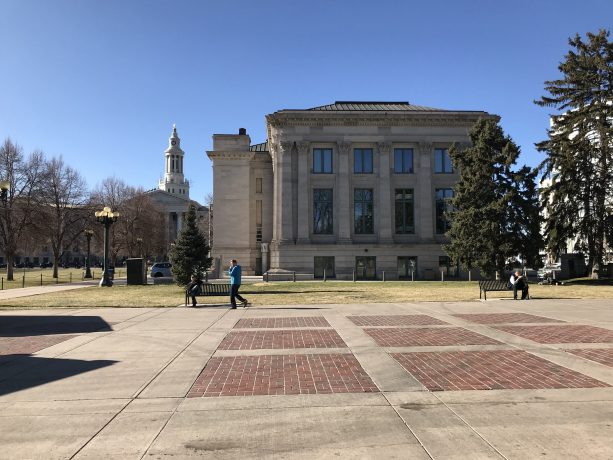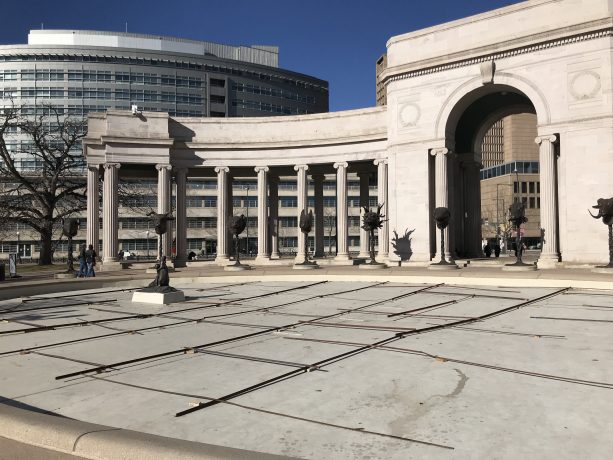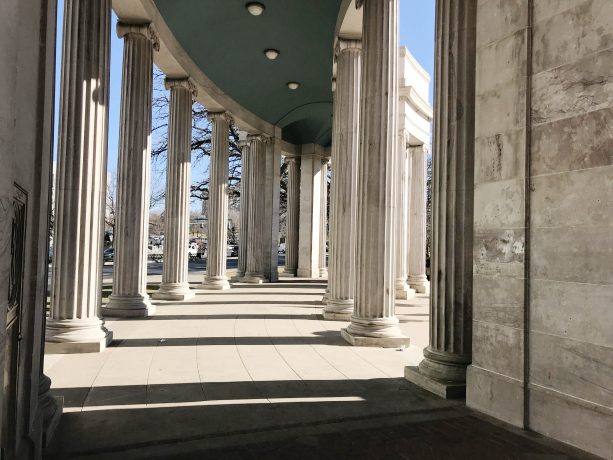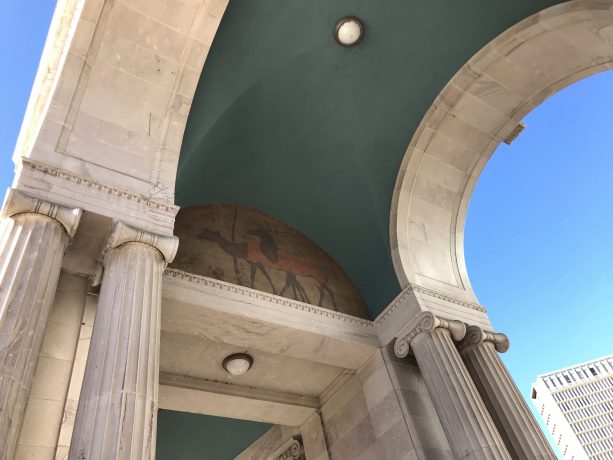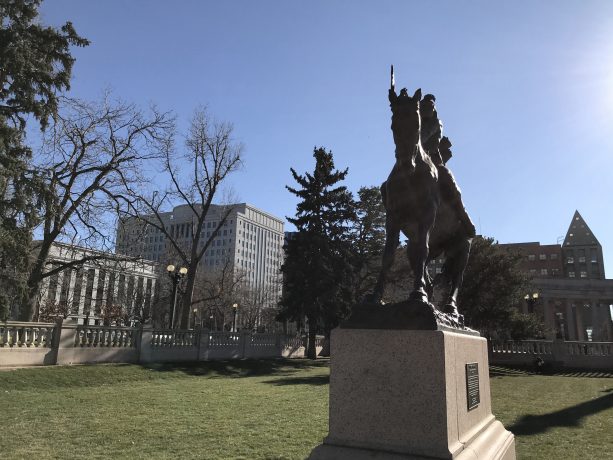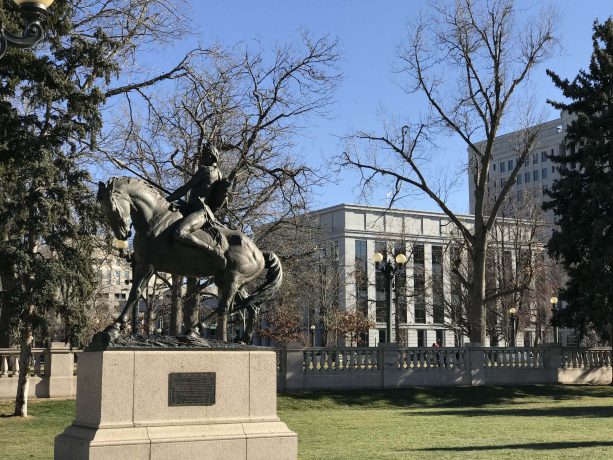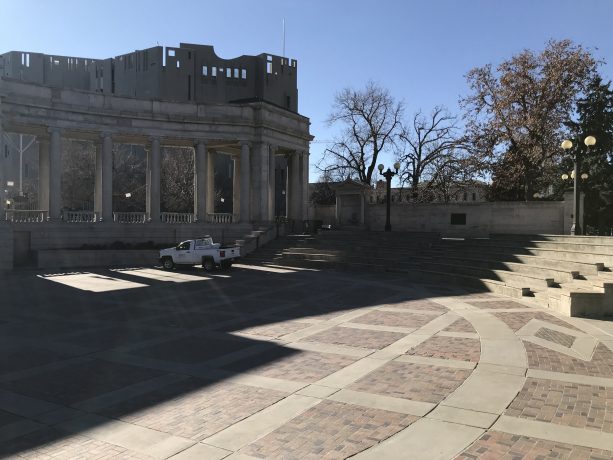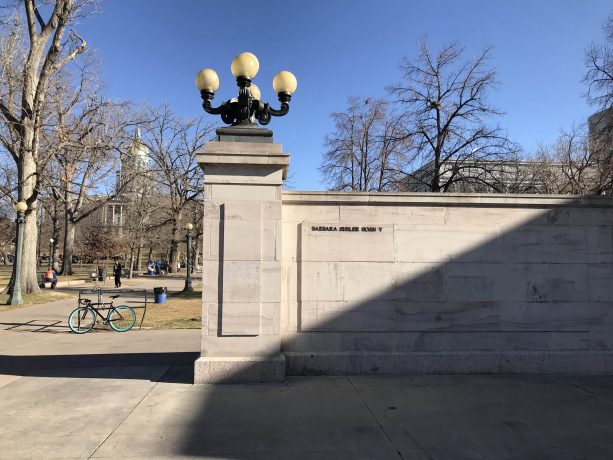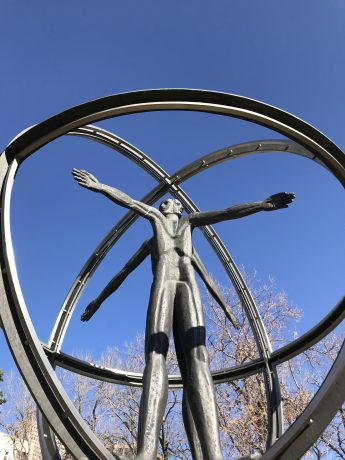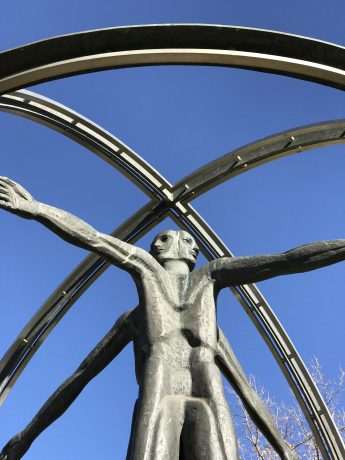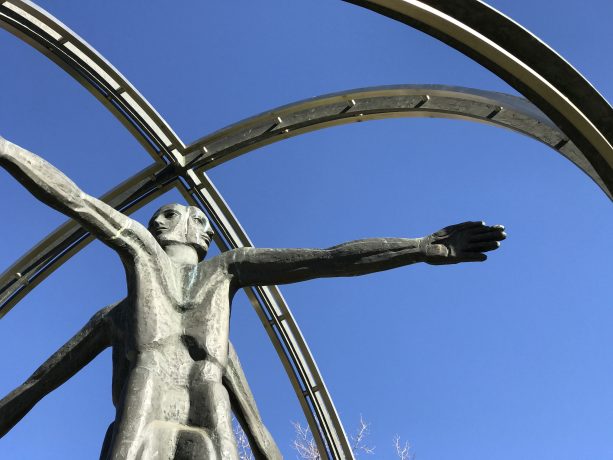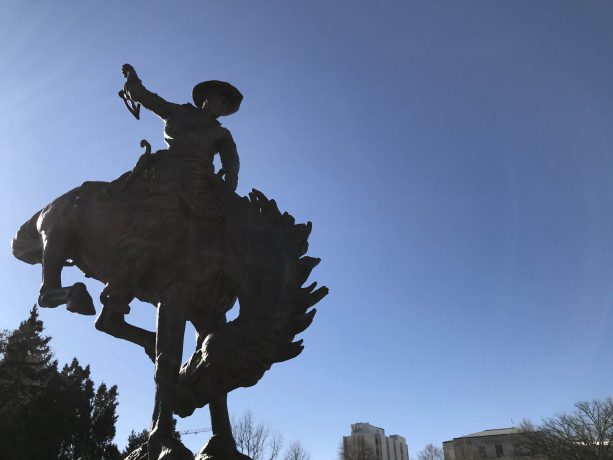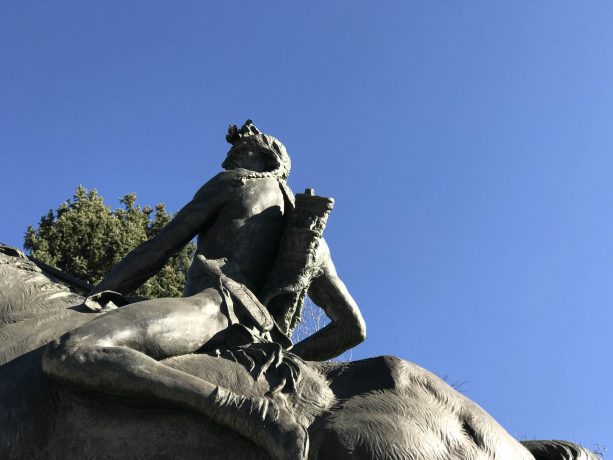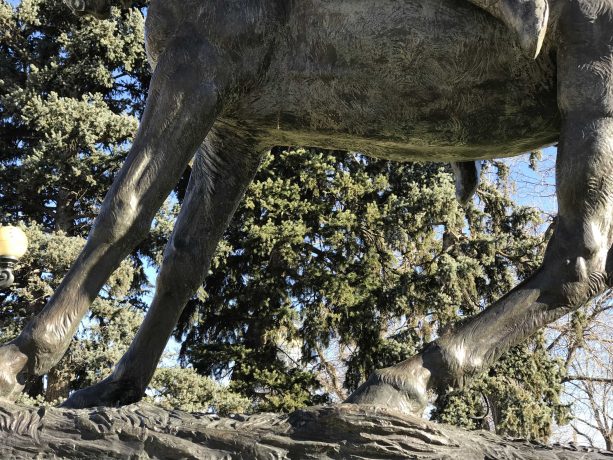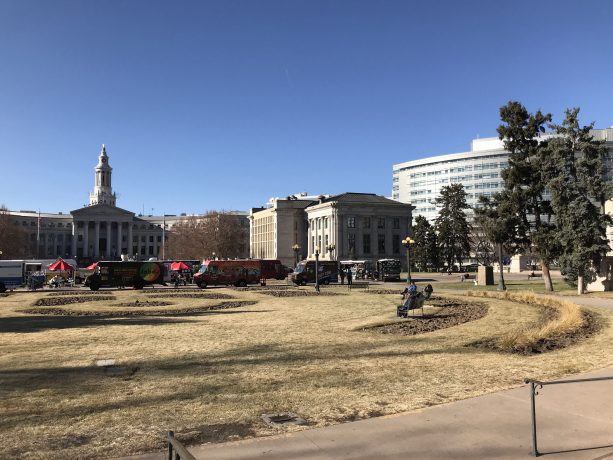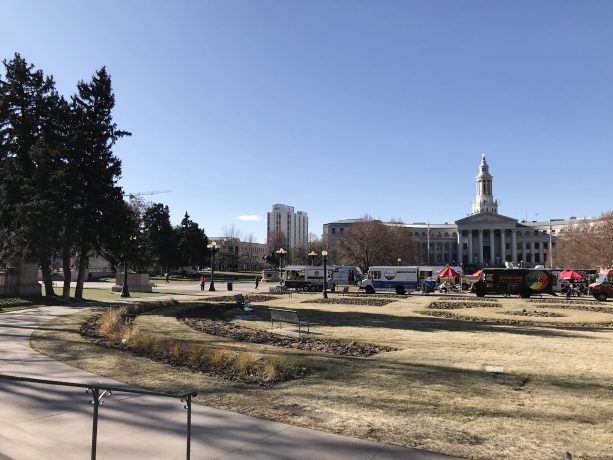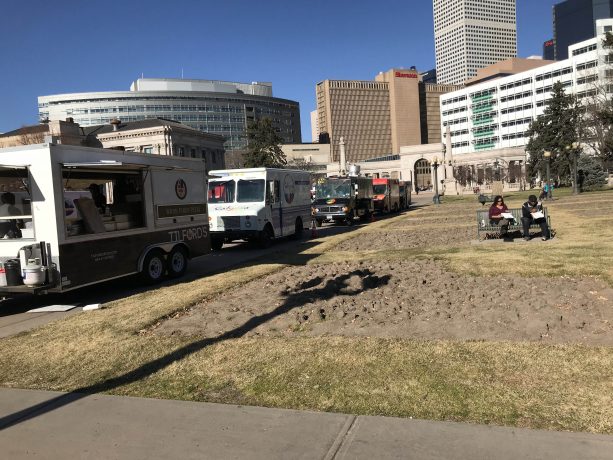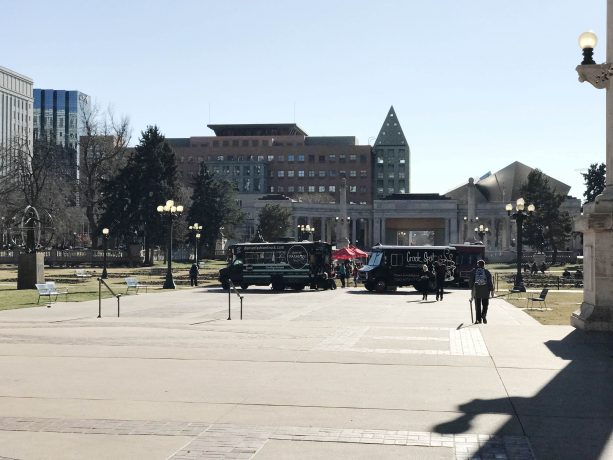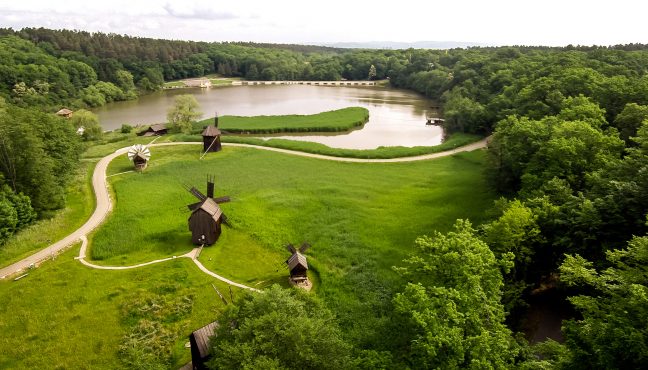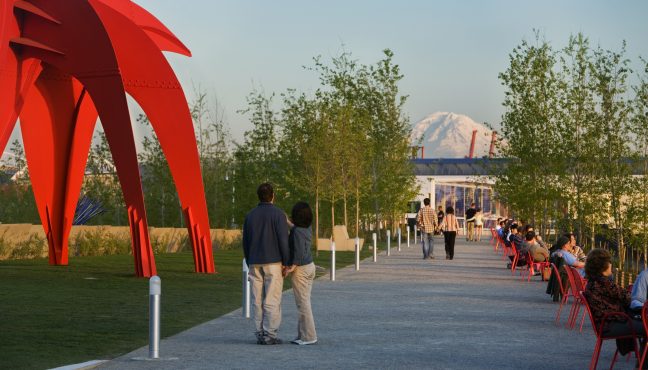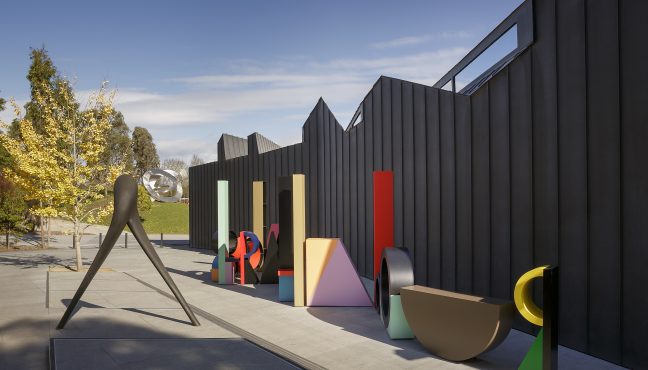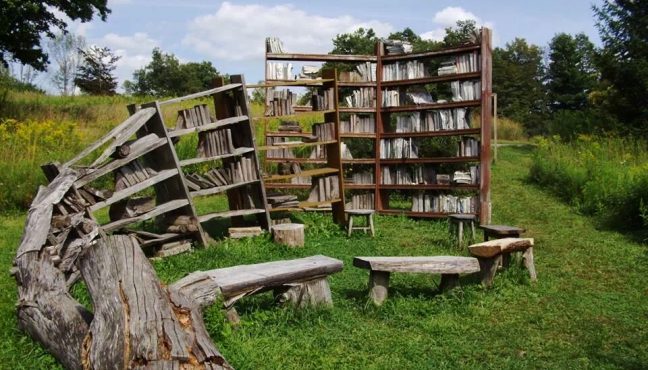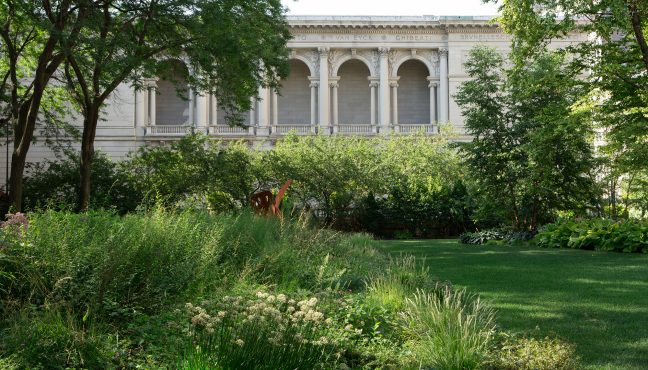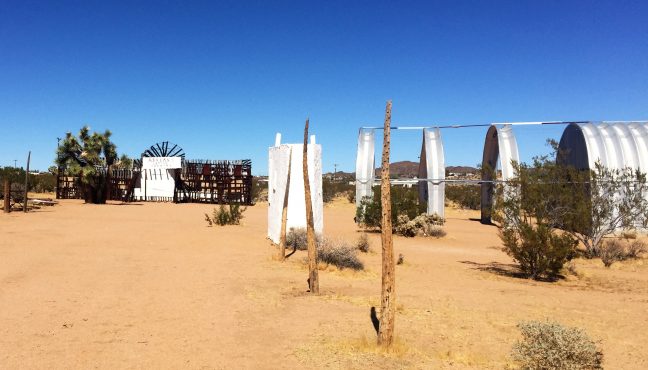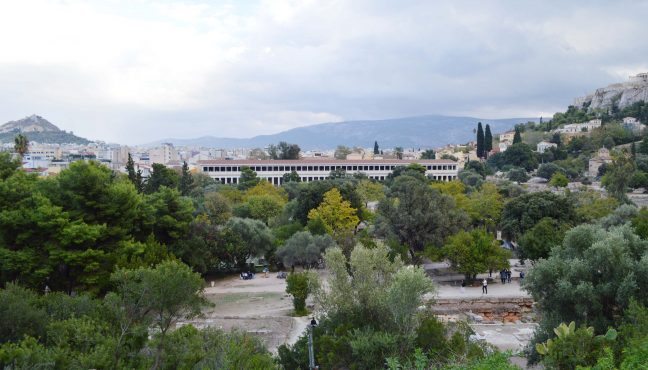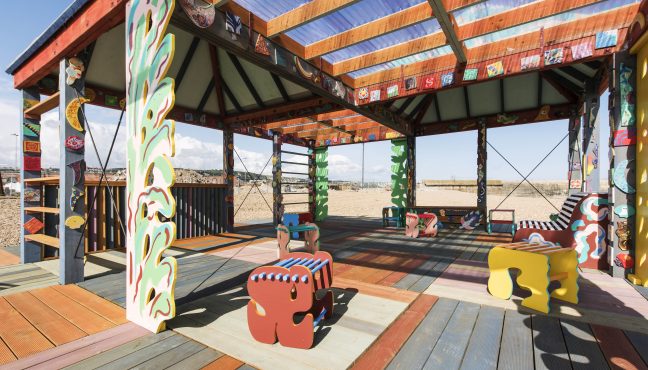Civic Center Park is always humming with activity. This slim green plot is a canyon of open space, between the ever-changing landscape of downtown Denver. Rising above the Greco-Roman arches are high, tightly-packed buildings whose inhabitants descend upon the sloping lawns at every hint of sunshine.
And really? You can’t blame them.
Rain, snow, or shining sun, the park is packed with gourmet food trucks at noontime, lines of business people from the surrounding offices waiting for their gyros, sambusa, and frozen yogurt— though hopefully not together. Truly, Civic Center is the perfect park for a picnic, if you’ll excuse the alliteration. Place a blanket on the ground, or lay out a basket on one of the marble benches. Between bites of the Mile High’s finest quick cuisine, you can observe an assortment of installations that reflect the intricate and diverse nature of the city.


The most recent addition to the park is a collection by highly acclaimed Chinese artist Ai Weiwei. Twelve bodiless heads, each a member of the Chinese zodiac, are arranged in semi-circle on the far north end of the park. Framing them is one of two semicircular gateways, composed of Ionic columns and Greek architecture, that lay at the north and south ends of the park.
This background provides an interesting contrast to Ai Weiwei’s artwork. It’s the classic clash of East Asian sculpture with Western architecture. Further complicating the image are the Allan True murals on the inside of the gateway that illustrate a handful of stereotypical wild western scenes, including a gold miner and a fur trapper. Each of these elements are drawn from very different eras, they are shown in very different forms, and come from three very different continents. And yet, they form a consistent blend. Moreover, it’s a representation of the multicultural aspect that American cities have always had but often fail to acknowledge.
Each bronze animal is a reinterpretation of the zodiac water clocks of Yuanming Yuan, which were looted by French and British troops in 1860. The reparation of these priceless original figurines has been a flashpoint in the debate over the ownership of the past. As always with Ai Weiwei, the point is to start a conversation, or to at least force the viewer to question their past conceptions. More on the animals can be discovered in McNichol’s Civic Center Building, which is a stone’s throw away. Within is Ai Weiwei: Art & Social Change, a short exhibit that provides additional insight into Ai Weiwei’s process and mindset.
Just across from the Zodiac heads, the southern gateway opens into a small Greek theatre, also containing murals by Allen True. The rotunda is almost an exact copy of the one to the north, except for small variations in color. While the entrance to the north provides the background to sculptures, the south offers a frame to the architectural masterpiece of Denver Art Museum’s Hamilton Building.
Actually, much more than the Hamilton Building can be spied from between the columns and above the archway. Both structures of the art museum, along with Denver Public Library, are intentionally built to be visible from various angles in the park. Moreover, each one is an architectural feast. It is easy to lose yourself examining the intricate details of the monumental tributes to the power of human creation. In a sense, these are an integral part of Civic Center Park’s public art.
Each building piques the imagination: is that the museum’s North Wing, or a medieval fortress? A jutting piece of Rocky Mountain Shale, or the Hamilton? A life-size playhouse from a childhood dream, or the library? Truly, it is a fanciful view.
Speaking of the outlandish, you can spot a life-size horse sitting atop a 21-foot-tall red chair just across the park, on the lawn of Denver Public Library. The horse is meant to be whimsical, “a cause for wonder” according to the sculptor, Donald Lipski.

Other celebrations of Colorado’s western past can be found at the center of the park. Divided by the walking path through the park are a matching pair of bronze statues by Alexander Phimister Proctor. On the surface, the two are extremely similar, both depicting men rushing into action on horses and set atop solid blocks of Colorado black granite. Bronco Buster was completed in 1920 (just after the opening of the park) and shows a stereotypical cowboy atop a bucking bronco. Two years later, Proctor complete its counter-part On the War Trail, which shows an Native American man wielding a spear as he rides a horse bareback.
Both of these are emblematic of the attitudes of the time; Denver was still the frontier, a land still lawless by the straight-laced standards of the east. In fact, the model used for Bronco Buster had to be bailed out of the local prison for horse rustling during the production of the statue.
Fast-forward fifty years and advance a few hundred feet north in the park and you’ll find the Columbus Monument, a bronze figurine of a composite man inside overlapping circles. It’s a bit reminiscent of a ride at an amusement park, or maybe NASA’s infamous vomit comet. That’s probably not a flattering image, but that’s truly what it resembles.
The man’s four arms point North, South, East, and West; his four unrefined faces gazing outwards. It’s a tribute to, unsurprisingly, to the early European exploration of the Americas. It was erected in 1970 and has attracted a good deal of negative press in the intervening years, due to the growing acknowledgement that Columbus did a great deal of harm in his time and set a bloody precedent for the next few hundred years of history.
In spite of this, or maybe in light of this, the statue serves as an interesting reminder of the past, tucked away between the folds of antiquity. The final attraction comes in the form of the collaboration between a tireless team of gardeners and the plants they cultivate. During the springtime, twenty-five thousand square feet of flower beds explode into life, nearly every shade of the color spectrum represented in their glory. This is perhaps an overlooked aspect, but the curatorial process is no less intense than any other display.
Weather you have a penchant for the delicious, the aesthetic, or the scholastic, Civic Center Park will satisfy your craving in full.
